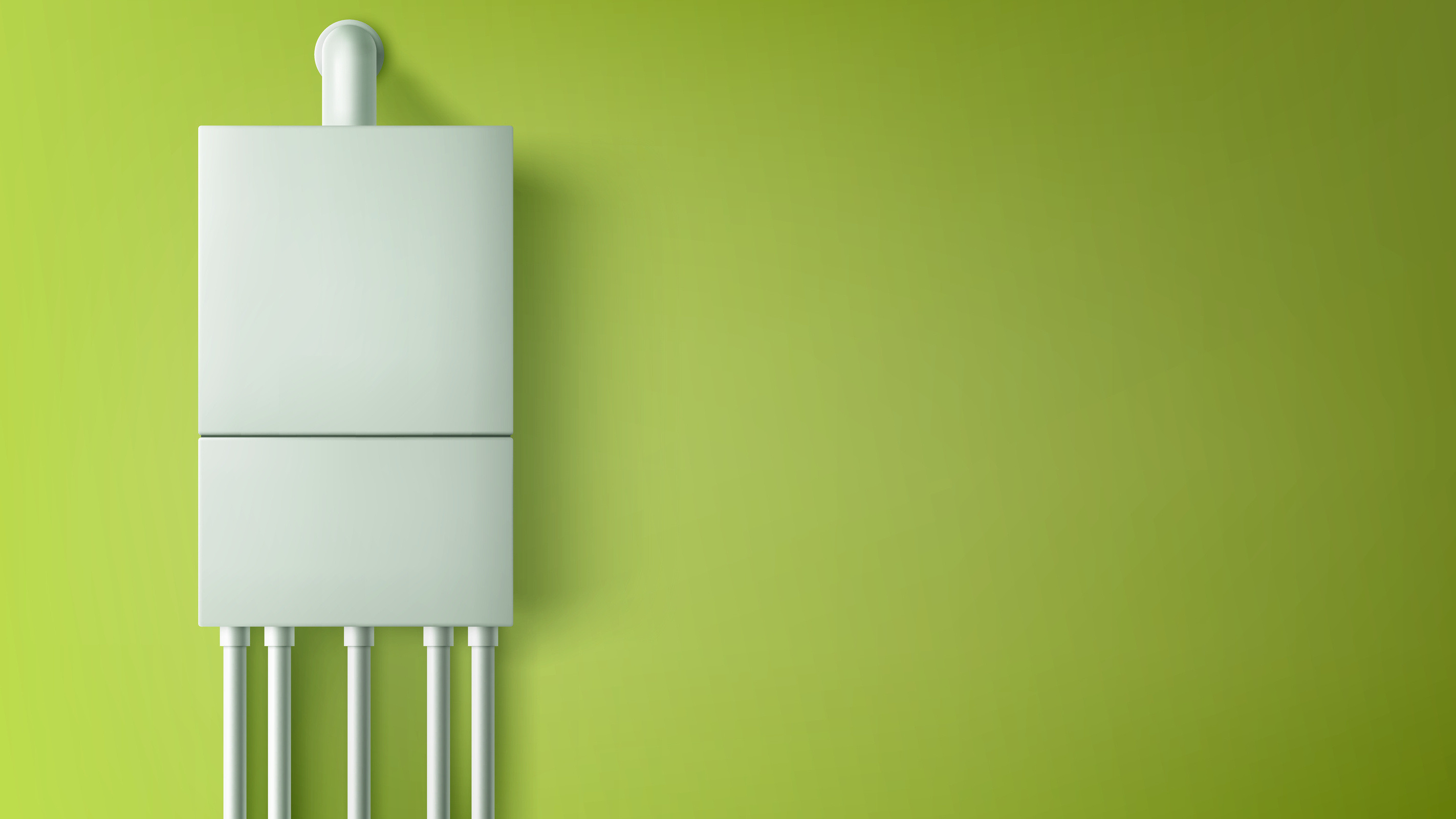
A central heating system keeps your home warm and provides hot water in the colder months of the year. It functions optimally with the help of a boiler, pipework, and radiator. If you are also looking to clarify your concept regarding a central heating system, then you are at the right place. Make sure to read the blog until the end!
What is a Central Heating System, and how does it work?
Basically, a central heating system generates heat from a single source, usually the boiler; from there, it transfers the heated water through the pipework to your radiators in different rooms or underfloor heating systems. Once the heat is distributed, the water is transferred to the boiler to reheat. The efficiency of the heating depends upon the type of boiler. To ensure optimal performance and avoid unexpected breakdowns, having boiler cover can be beneficial. Generally, there are three boilers: Conventional, System, and Combi. We will discuss them in detail later in this blog.
How many types of Central Heating Systems are there?
There are mainly 4 types of central heating systems mentioned below:
1. A Warm Air Heating System
Popular in the 1970s, a warm air heating system operates by obtaining cold air from outside, heating it with a boiler, and circulating it around the building or homes. These systems are more suited for large commercial buildings than residential buildings.
2. Wet Central Heating System
The most popular and commonly found type of central heating system is the wet central heating system. Basically, in a wet heating system, a single source, usually the boiler, burns fuel and heat the water to transfer it through the pipework all the way to your radiator or underfloor heating system to provide your home heating and hot water. The heat flow from the radiator is controlled through a TRV (Thermostatic Radiator Valve Head), A boiler thermostat, a programmer or timer, and a room thermostat. Once the heat is fully extracted, the water travels back through the pipes to your boiler for reheating. The fuel options for a wet heating system include gas and oil. Also, wet central heating systems generally use two types of boilers: Combi-boiler and System-boiler.
3. District Heating System
A district heating system is a relatively old type of central heating system that refers to an underground infrastructure that gathers and distributes thermal energy from a centralized heating source in the form of heating and hot water through a network of insulated pipework to buildings and your home. It involves a heat exchanger capturing the heat from the pipework and sending it through the centralized source in your home, including your boiler and radiators. Although, compared to the wet central heating systems, they are not that popular, they have been gaining popularity recently due to their energy efficiency and zero carbon emission. According to industry reports 2025, The UK District Heating Market size is predicted to reach USD 1.54 billion in 2025 and increase at a CAGR of 3.20% to reach USD 1.80 billion by 2030.
4. Electric Central Heating System
As the name suggests, an electric central heating system uses electricity to heat water using an electric boiler. They heat water and distribute it through electric radiators to different rooms in your home. This can get expensive, so it is used in contrast with your central heating system, also known as an electric storage system. Electric firebricks with electric components are used to store heat overnight in electric storage heating systems. Because it relies on a wired system within the house to use off-peak electricity, the electric storage heating system is often called a "centralized" system.
Bricks are helpful when you have electric storage heaters since your house radiators need power to charge and release heat. Electric radiators use infrared radiation rather than convection to heat the space. They are classified as wet central heating systems; hence, they are not comparable to electric boilers.
What fuel type does my central heating system run on?
Mainly, there are four types of fuel on which your central heating runs, which are the following:
1. Gas-fuelled Central Heating System
A gas-fuelled central heating system is the most common method in the UK to provide your home with heating and hot water. Natural gas is the cheapest source to heat your homes in a wet central heating system by getting connections from the national grid, which most homes are connected to. The running cost of a central heating system on gas is estimated at 7.42 pence per kWh. To calculate the running cost of your central heating system, consider factors such as alternative fuel options and tips to save on your energy bills. However, due to CO2 emissions, the government is planning to ban gas boilers in the future. Also, under a government upgrade scheme, you might be eligible for a grant if you look to replace your gas boilers with heat pumps or biomass boilers.
2. Electric Central Heating System
Choosing an electricity-generated central heating system means you're not just heating your home through a wet heating system without gas, but you're also significantly reducing your carbon footprint. An electric boiler, powered by electric elements, heats water without burning gas, making it a greener and more environmentally friendly option than traditional gas fuel types. However, the running cost of an electricity-generated central heating system is 28.62 pence per kWh, which is quite expensive compared to gas.
3. Oil-fired Central Heating System
Oil-fired central heating systems are run on oil. But, compared to a gas-running central heating system, you don’t need a connection to any network; instead, you will need to contact an oil supplier, who will provide you with an oil tank inside or outside your home. The tank lasts for a few months. The running cost of an oil-fired central heating system is 10 pence per kWh, which is a little expensive as compared to gas. Also, it is less energy efficient than a gas central heating system.
4. Biomass Central Heating System
Lastly, the least popular but most environmentally friendly central heating system is the biomass system. It burns natural resources like wood pellets and logs to provide heating and hot water to your home. It also releases carbon emissions into the environment but in a much smaller quantity than oil and gas-fired central heating systems.
What type of boiler options do I have for my central heating system?
When you visit the market to buy a new boiler, you will mainly get three options:
1. Regular Boilers
Regular boilers, sometimes called conventional boilers or heat-only boilers, use a hot water cylinder, a cold-water storage tank, a feed expansion tank, and a pump to deliver hot water and central heating. The hot-water cylinder receives the main supply from the cold-water tank and uses a heat exchanger to reheat the water. The pump then uses this hot water to supply showers, taps, and radiators. However, as water is frequently lost from the system due to leaks and evaporation, a feed expansion tank is necessary to maintain constant water pressure.
2. System Boilers
Boilers that meet the needs of larger households for hot water and heating are known as system boilers. They are common in multi-bathroom homes in the UK. System boilers save space by not requiring a separate cold-water tank and work by receiving connections straight from the mains. Thanks to a coil in the cylinder, multiple taps receive hot water at a desired temperature and pressure. The system boiler may also simultaneously heat the radiators in your house.
3. Combi Boilers
Often referred to as a "combi boiler," a combination boiler delivers hot water and heating without the need for an extra storage tank. Because it doesn't need to be housed in a separate room—it may even be placed in a kitchen cupboard—this has the benefit of freeing up additional space. Moreover, best combi boilers provide fast hot water and warmth whenever needed by drawing water straight from the mains.
What are the efficient ways to run a central heating system?
Before we end our discussion on central heating systems, here are some bonus tips that will help you run your central heating system effectively and efficiently:
1. Set your thermostat to the ideal room temperature, which usually lies between 18°C and 21°C.
2. Use your programmer like an expert by programming your central heating based on your needs.
3. Invest in a thermostatic radiator valve head.
4. Annually service your boiler.
Final Words!
I hope that after reading the above blog, you now know what a central heating system is and the indirect factors affecting it. Remember that your needs are the cornerstone before you choose to get a new central heating system or upgrade from an old one. So, analyze your family's needs, calculate consumption in terms of energy units, and choose the right type of central heating system that best suits your needs.







